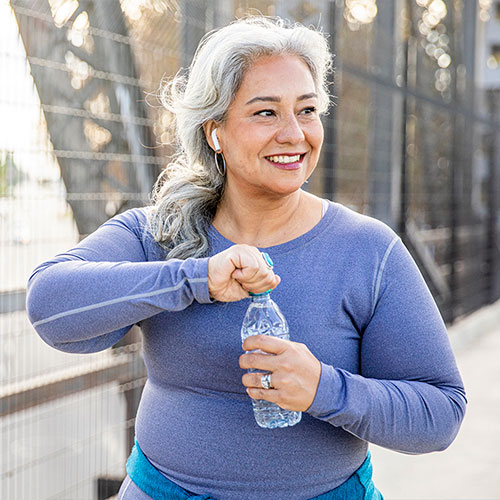October 2023
On average, women in the U.S. can expect to live just over 79 years, according to the Centers for Disease Control and Prevention. That’s six years longer than the average for men. But certain female-specific cancers can shorten a woman’s life. And other female health conditions can decrease a woman’s quality of life.
Here are three common health problems that women face, along with guidelines for when to seek medical help:
Female-Specific Cancers
With the exception of skin cancer, breast cancer is the most common cancer women face. In 2023, the National Cancer Institute estimates nearly 300,000 women will receive a new breast cancer diagnosis. Gynecologic cancers — including uterine cancer, cervical cancer, and ovarian cancer — account for another 85,000+ cancer diagnoses in women in each year. Your chances of surviving any type of cancer increase with early detection. Here’s what you need to know for each type of cancer:
Breast cancer: Regular mammograms are the best way to catch breast cancer early. Women at average risk should get yearly mammograms starting at age 45 until age 54 and every other year starting at age 55. If you’re at higher risk, you may need to start mammograms earlier or have them more often.
Uterine cancer: There are no screening tests for uterine cancer. Your doctor can run diagnostic tests, including a transvaginal ultrasound, if you have symptoms. Symptoms of uterine cancer include abnormal vaginal discharge or bleeding and pelvic pain and pressure.
Cervical cancer: A primary HPV test or Pap test can catch pre-cancers before they turn into cervical cancer. The HPV test looks for the human papillomavirus — the most important risk factor for developing cervical cancer. The Pap test looks for abnormal cell changes and other signs of malignancy. For both tests, your gynecologist will take a small cell sample from your cervix during a pelvic exam.
Beginning at age 25, women should have a primary HPV test every five years until age 65, according to American Cancer Society guidelines.
Ovarian cancer: There are no effective or recommended screening tests for ovarian cancer in average risk women, so it’s often caught in the later stages, when it’s more difficult to treat.
To catch it early, it’s important to recognize symptoms, including bloating, pelvic or belly pain, lack of appetite, feeling full quickly, and frequent urination or feeling like you have to urinate.
If you have a family history of ovarian cancer, talk to your doctor. Certain screenings may be appropriate for you.
Endometriosis
Endometriosis is a common health problem for women. Researchers estimate that more than one in 10 females between the ages of 15 and 44 have it. Endometriosis occurs when tissue similar to the uterus lining grows outside of the uterus, in places where it doesn’t belong.
Symptoms can include extremely painful menstrual cramps, ongoing pain in the pelvis and/or lower back, and deep pain during or after sex.
Other symptoms include spotting or bleeding between periods, infertility, and digestive problems, especially during your period.
Heart Disease
Heart disease is the number one cause of death of women. Roughly one out of five women will die of heart disease — and heart disease kills more women each year than all types of cancer combined.
Women are more at risk of heart disease after they hit menopause because the higher levels of estrogen in menstruating women also protect the heart.
Some of the symptoms of a heart attack span both sexes, such as:
- An uncomfortable feeling of pain, pressure, squeezing, or discomfort in your chest.
- Pain in your stomach or one or both arms.
- Lightheadedness.
- Cold sweat.
But women may have symptoms that people don’t typically recognize as heart attack symptoms.
If you are experiencing symptoms of a heart attack, call 911.



